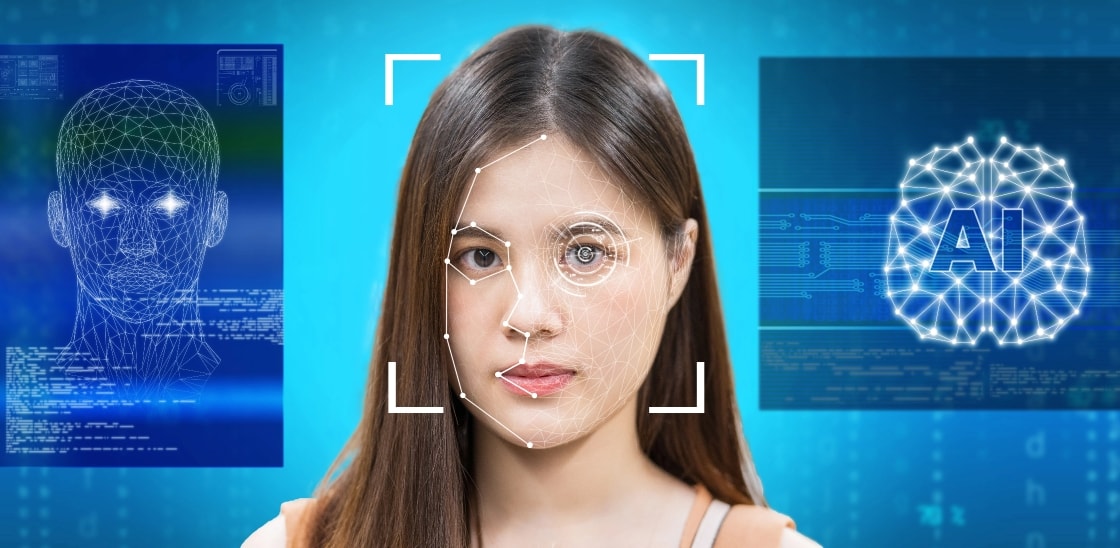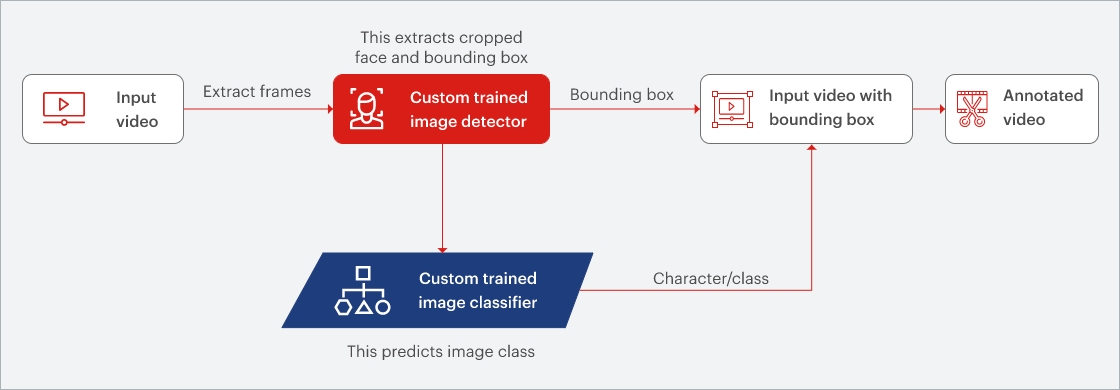Exploring the next generation of facial recognition technology
Reading Time: 6 minutes

In the year 2017, face detection technology was first introduced as a feature in a smartphone (cue: ‘Face ID’ in Apple iPhones). Today, facial recognition technology is more expansive and widely integrated than ever before. This technology has been adopted by major financial institutions, credit card companies, technology platforms, and even Major League Baseball. Amidst the pandemic, facial recognition technology infiltrated our professional lives as well. Many enterprises upgraded their access control systems by replacing badge or fingerprint readers with systems harnessing facial recognition. This became especially important in a decentralized environment where companies are increasingly required to enhance worker safety and security in less populated workspaces.
As per a global market study, the facial recognition market is soaring. In 2020, the technology’s market size approached $4 billion, and is expected to reach $16.74 billion by 2030. Growing at a CAGR of 16%, businesses can explore a wide range of applications such as from enhancing security measures to improving video surveillance and even helping to diagnose medical conditions.
Face detection and recognition: Facets of computer vision
Before discussing a few popular applications of computer vision, it is imperative to understand these technologies and how they are different in essence.
1. Face Detection
Face detection is a computer vision technique used to locate and identify human faces within digital images or videos. The process involves analyzing an image or video frame and identifying regions that contain facial features such as eyes, nose, mouth, and the shape of the face. Once the region containing the face is detected, a bounding box is typically drawn around the face for further analysis or processing.
2. Face Recognition
Face recognition is a computer vision technique used to identify or verify the identity of an individual by comparing their facial features with those stored in a database. It involves analyzing an image or video frame, detecting the presence of a face, and extracting specific facial features such as the distance between the eyes, the shape of the jawline, and the curvature of the lips. These features are then compared with the features of previously stored faces to identify or verify the individual.
Prominent facial detection and recognition models
There are several face detection and recognition models that exist today. Some of the most popular ones are:
1. Viola-Jones Algorithm
One of the oldest and most widely used algorithms, it uses Haar cascades and AdaBoost to detect faces in images and video frames.
2. Histogram of Oriented Gradients (HOG)
Another popular face detection algorithm that uses gradient orientations to detect faces in images and video frames.
3. Convolutional Neural Networks (CNNs)
Currently, the most widely used face recognition models that utilize deep learning techniques to learn features from images and recognize faces. CNN-based models, such as Multi-task Cascaded Convolutional Networks (MTCNN), Faster R-CNN, FaceNet, VGG-Face, and OpenFace, are highly accurate and suitable for real-time applications such as surveillance, personal identification, social media, and e-commerce.
Shortcomings in the existing face detection models
While the existing face detection and recognition models have shown optimal level of accuracy, they still have some limitations, such as:

1. Regular data training required
High accuracy face detection and recognition require large, diverse datasets that contain images of faces captured under various lighting, poses, and expressions. Obtaining such datasets can be challenging, especially when dealing with data containing facial images of individuals.
2. Inability to detect and recognize occluded or masked faces
Face detection and recognition solutions depend on recognizing clearly visible facial features such as eyes, nose, mouth, and chin. When a face is partially covered or occluded with objects such as hat, glasses or a hand, the facial features may not be easily recognizable, leading to inaccurate or incomplete recognition.
3. Unable to detect and recognize cartoon/non-human characters
Detecting and recognizing non-human faces, such as cartoon characters or animals, is a challenge because their facial features may not conform to typical human features.
4. Cost and Complexity
Developing and implementing face detection and recognition systems can be expensive and time-consuming, requiring significant resources and expertise, which can limit their accessibility to smaller organizations or communities.
Advanced facial recognition technology and its applications
We have developed advanced facial recognition systems that outperform existing solutions by detecting and recognizing even masked or occluded faces with unparalleled accuracy, using advanced algorithms that require very little training data. Here are some of the features of Sigmoid’s solution:
- It can detect and recognize both human and non-human faces, including those that are masked or partially covered.
- The model can be trained with as few as 50-150 images per character, and still achieve high accuracy.
- The training data is diverse and not limited to the roles played by characters in the video, which allows the model to recognize even masked characters.
- The solution can detect and recognize faces from different angles, including side faces, with significant confidence.
- It performs live detection and recognition with a bounding box and label over the character’s face, making it easy to use.
- The output video is generated in less than 70 minutes for a 44-second input video, using freely available resources.
With even more upgrades underway, Sigmoid’s solution continues to deliver high accuracy rates for face detection and recognition in both images and videos. This is enabled through a proprietary solution framework, as shown in the figure below –

Sigmoid’s facial recognition solution framework
Potential business applications of Sigmoid’s facial recognition solution across industries:
1. Media and Entertainment industry
Face detection and recognition can be used to calculate an actor’s screen time in a movie or TV show, which enables researchers to analyze patterns and correlations between screen time, movie ratings, and box office collection. This information is useful in predicting a movie’s potential success and making casting decisions. Additionally, streaming companies can use this technology to gain insights into viewers’ preferences and provide a more engaging and personalized viewing experience.
2. Financial services
Customer identification and verification can be done through facial recognition. Similarly, facial recognition technology can make the customer onboarding process faster. To reduce ATM robberies or banking fraud cases, facial recognition can be used to add another layer of security.
3. Hospitality
Hotels can use this technology to identify guests, access their reservation information, and provide personalized services based on their preferences. The technology also enables staff to add charges for services accessed during their stay to the guest’s bill.
4. Healthcare
Facial recognition can automatically scan a patient’s face and extract medical history and insurance information, saving time for healthcare workers and patients. A recent study shows 66% of patients accept the use of facial recognition technology for this purpose. It can also assist in diagnosing medical disorders in patients with mild or difficult-to-detect symptoms.
5. Retail
Facial recognition is being used to streamline B2C retail operations such as self-checkout and contactless payments, providing a more customized shopping experience, better customer services, and tailored assistance. Additionally, facial recognition can enable personalized offers/programs for boosting customer loyalty. Retail security can also be enhanced through facial recognition to reduce the occurrence of shoplifting.
Conclusion
Neural networks have revolutionized facial recognition technology, enabling accurate detection in challenging conditions such as backlight, facial occlusions, and different camera angles. Additionally, FRT vendors prioritize privacy features to ensure ethical deployment, including reducing gender and racial biases and built-in data protection features to manage data retention. Facial recognition has overcome its adolescent years as a niche technology, and is now accurate, easy to deploy, learn, and compatible with pre-existing camera, access control and VMS systems, and triable and testable. Despite being around for a long while, 2023-2025 is expected to be its greatest years in terms of mainstream adoption. A combination of technical breakthroughs, growing consumer confidence, and industry normalization points to the fact that this technology will become widely embraced in the coming years.
About the authors
Debapriya Das is a Principal Data Scientist at Sigmoid with 11 years of experience across retail, supply chain and marketing analytics. With his deep expertise in data strategy, advanced analytics and unstructured data problems, he has delivered business value to leading Fortune 500 brands and many E-Commerce companies.
Abhishek Verma is a Senior Data Scientist with more than 2 years of experience in the Data Science field. He holds a proven record of delivering successful projects in various domains, such as Customer Relationship Management, Product Development and Computer Vision.
Featured blogs
Subscribe to get latest insights
Talk to our experts
Get the best ROI with Sigmoid’s services in data engineering and AI
Featured blogs
Talk to our experts
Get the best ROI with Sigmoid’s services in data engineering and AI



